The variegated ZZ plant, a low-maintenance and drought-tolerant houseplant, thrives in bright, indirect sunlight and requires careful watering to prevent root rot. Its shiny, oval leaves add elegance to any space.
While fertilization is optional, cleaning the leaves can enhance their shine. Propagation is straightforward, offering a way to expand your collection. Be cautious, as it is mildly toxic to humans and pets and may attract common pests.
ZZ Plant Variegated Lighting, Watering, and Soil Requirements

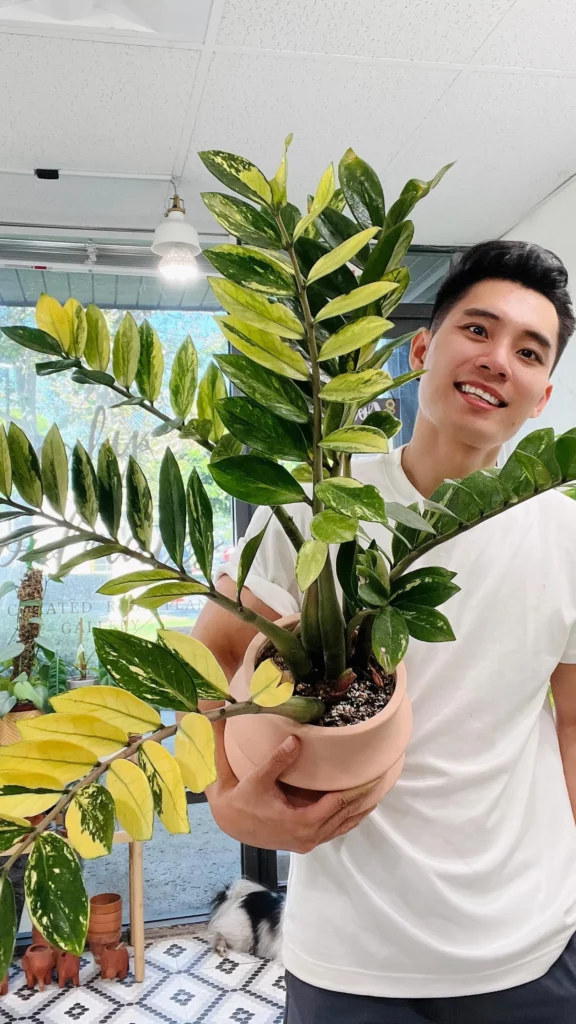
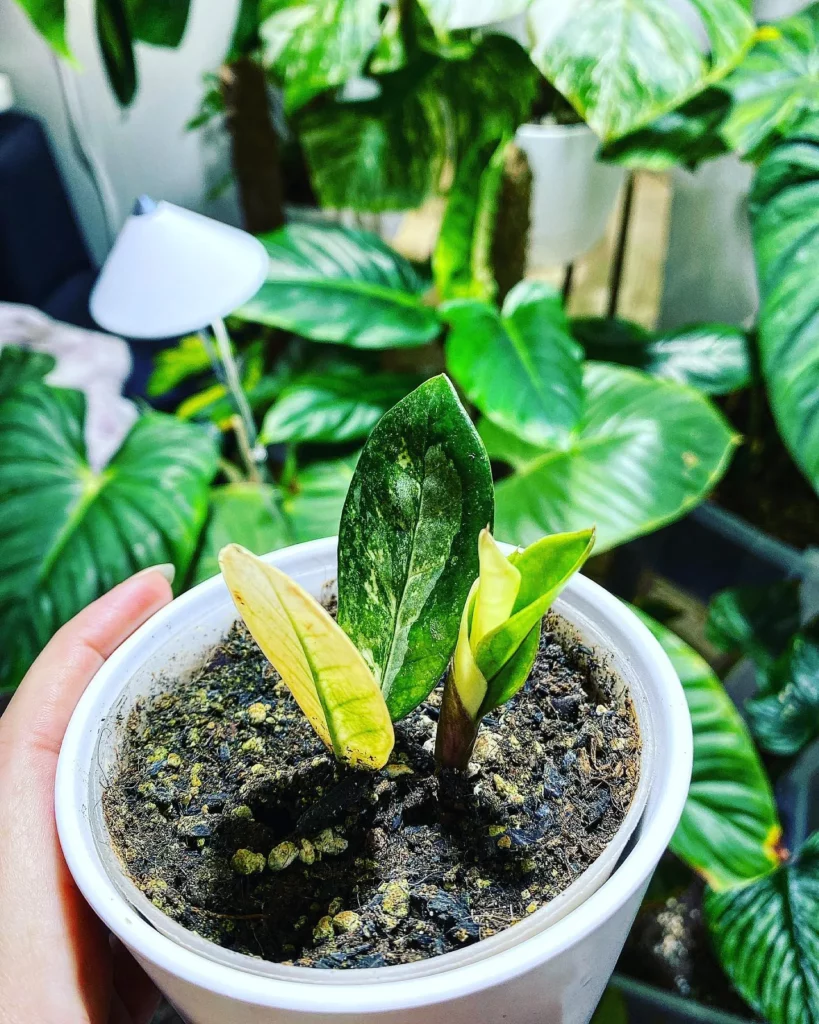
Providing the variegated ZZ plant with the right lighting, watering, and soil conditions is crucial for its overall health and vitality. This low-maintenance houseplant thrives in various lighting conditions, but it prefers bright, indirect sunlight.
Direct sunlight should be avoided as it can scorch the leaves. To ensure optimal growth, place the plant in a well-lit area, away from windows with direct sunlight.
No products found.
When it comes to watering, the variegated ZZ plant is drought-tolerant due to its rhizomes that store water. It is important to allow the soil to dry out between waterings to prevent overwatering and root rot.
When watering, thoroughly wet the soil and allow any excess water to drain out. This plant does not require frequent watering, so a good rule of thumb is to water it when the top inch of soil feels dry to the touch.
The variegated ZZ plant prefers well-draining soil that is rich in organic matter. A good potting mix for this plant can be achieved by combining equal parts peat moss, perlite, and potting soil.
The peat moss retains moisture, the perlite improves drainage, and the potting soil provides essential nutrients. This well-balanced soil composition will promote healthy root growth and prevent waterlogged conditions.
To maintain the beauty and vitality of the variegated ZZ plant, it is important to periodically clean its leaves. Dust can accumulate on the leaves, causing them to lose their shine.
Gently wipe the leaves with a damp cloth to remove any dust and restore their natural luster. This simple maintenance task will enhance the overall appearance of the plant.
Lighting, Watering, and Soil Tips:
| Lighting Requirements | Watering Requirements | Soil Requirements |
|---|---|---|
| Bright, indirect sunlight | Allow soil to dry out between waterings | Well-draining soil with peat moss, perlite, and potting soil |
| Avoid direct sunlight | Thoroughly wet soil during watering | Equal parts of each component |
ZZ Plant Variegated Pruning and Fertilizing Tips
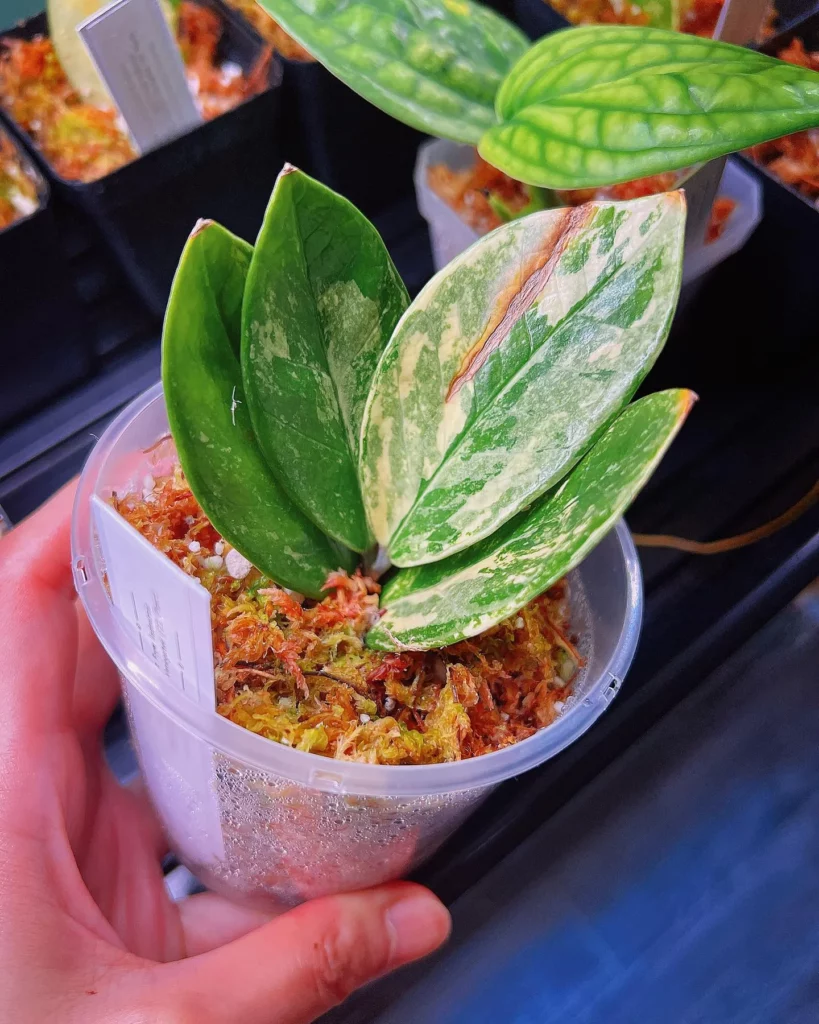
Pruning and fertilizing the variegated ZZ plant at the right time and in the right way is key to promoting its overall health and appearance. As a low-maintenance houseplant, the variegated ZZ plant requires minimal pruning, mainly focused on maintaining its shape and removing any yellowing or damaged leaves.
To prune the plant, use clean, sharp shears or scissors and make clean cuts just above the base of the stem. This will help stimulate new growth and make the plant look more attractive.
No products found.
Fertilizing the variegated ZZ plant is not a regular requirement, but it can help enhance its growth if desired. The plant benefits from a slow-release indoor plant fertilizer that is diluted to half-strength.
Fertilize the plant during its active growing season, which is typically spring and summer. Be cautious not to over-fertilize, as this can result in leaf burn. Follow the fertilizer manufacturer’s instructions and adjust the frequency and amount based on the plant’s response.
| Pruning Tips | Fertilizing Tips |
|---|---|
| • Prune to maintain shape | • Fertilize with slow-release indoor plant fertilizer diluted to half-strength |
| • Remove yellowing or damaged leaves | • Fertilize during active growing season (spring and summer) |
| • Use clean, sharp shears or scissors | • Follow manufacturer’s instructions |
| • Make clean cuts just above the base of the stem | • Avoid over-fertilizing to prevent leaf burn |
ZZ Plant Variegated Propagation Techniques
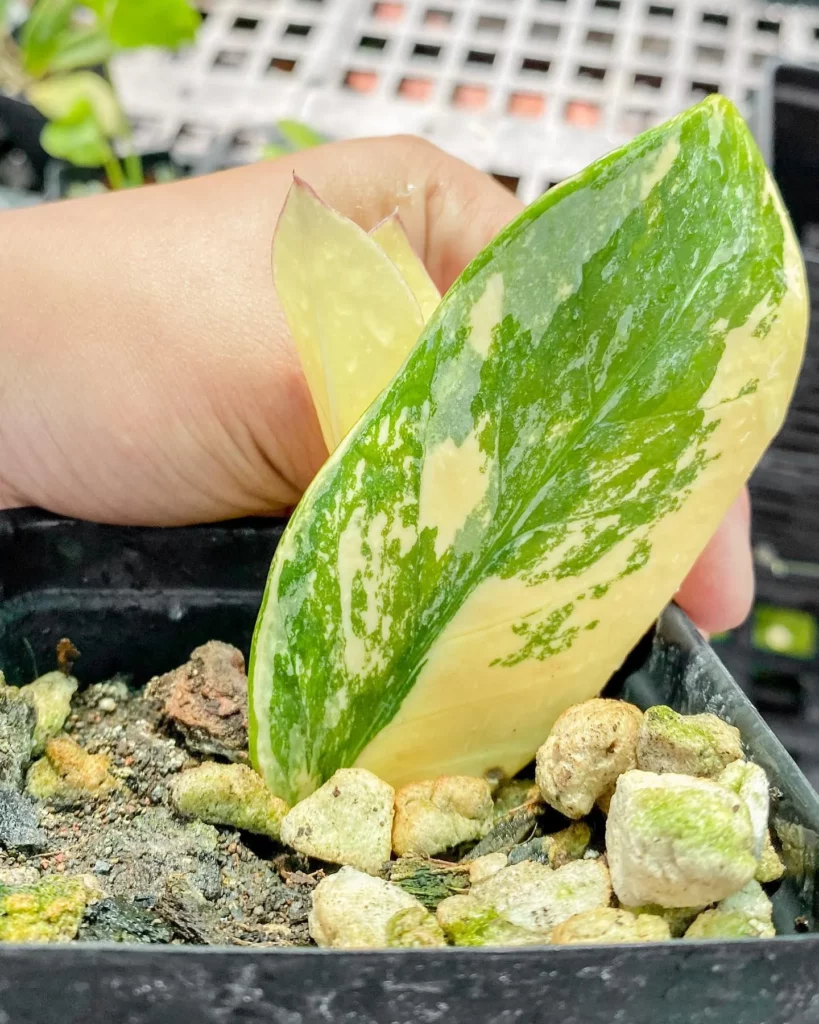
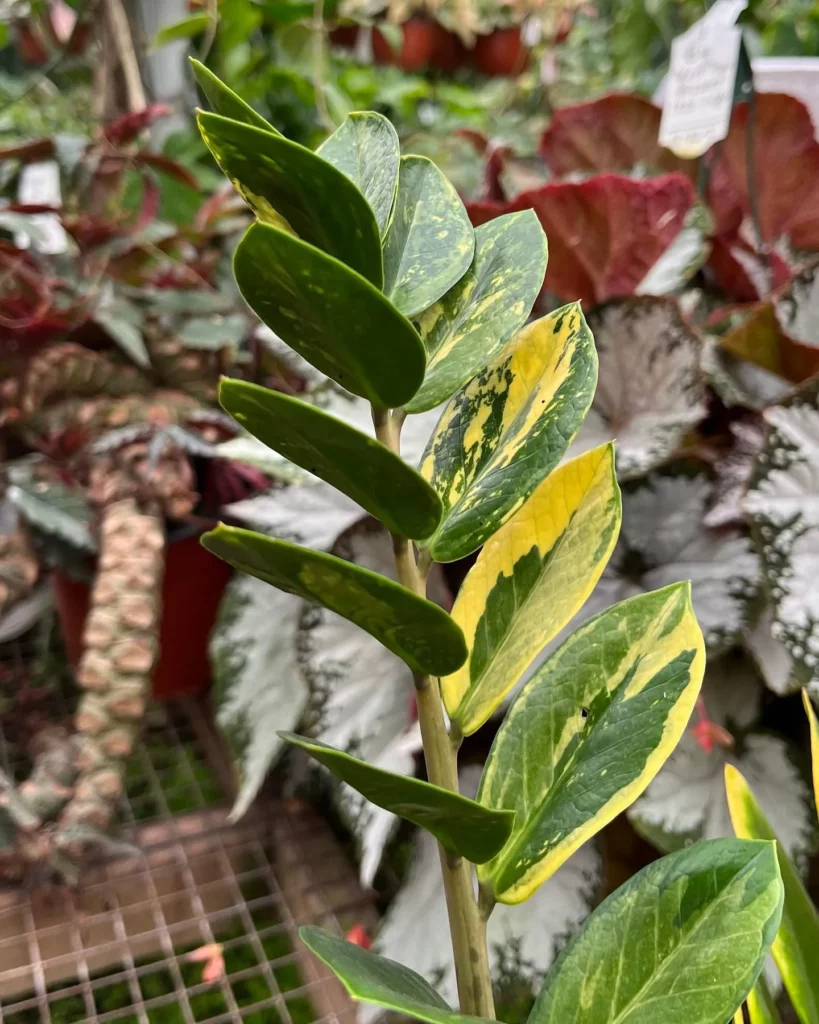
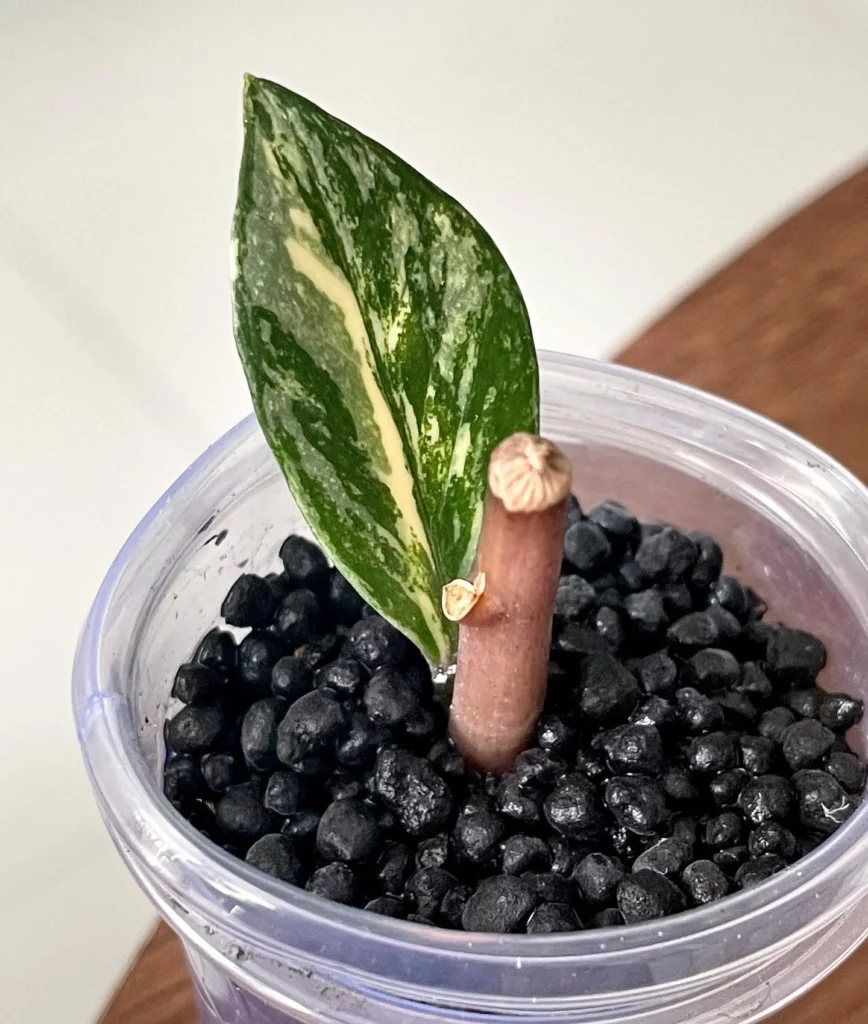
Expanding your variegated ZZ plant collection is a breeze with these simple and effective propagation techniques. The variegated ZZ plant can be propagated through division or stem cuttings, allowing you to create new plants from your existing ones.
To propagate through division, carefully remove the plant from its pot and separate the rhizomes into smaller sections. Each section should have healthy roots and at least one stem. Plant each division in its own pot with well-draining soil, and water thoroughly.
Keep the newly divided plants in a warm, bright location, ensuring they receive indirect sunlight. Within a few weeks, you should see new growth, indicating successful propagation.
If you prefer stem cuttings, select a healthy stem with at least two leaves. Using a sharp, sterilized knife, make a clean cut just below a node. Dip the cut end in rooting hormone for enhanced rooting. Plant the cutting in a container filled with a well-draining soil mix, and gently firm the soil around it.
Place the cutting in a warm, bright location with indirect sunlight, and mist the leaves occasionally to increase humidity. Keep the soil lightly moist, but avoid overwatering. After a few weeks, roots should develop, and you can transplant the cutting into its own pot.
No products found.
| Propagation Method | Requirements | Time to Root Development |
|---|---|---|
| Division | Healthy rhizomes with roots and stems | Approximately 2-4 weeks |
| Stem cuttings | Healthy stem with at least two leaves | Approximately 4-6 weeks |
ZZ Plant Variegated Common Diseases and Pests
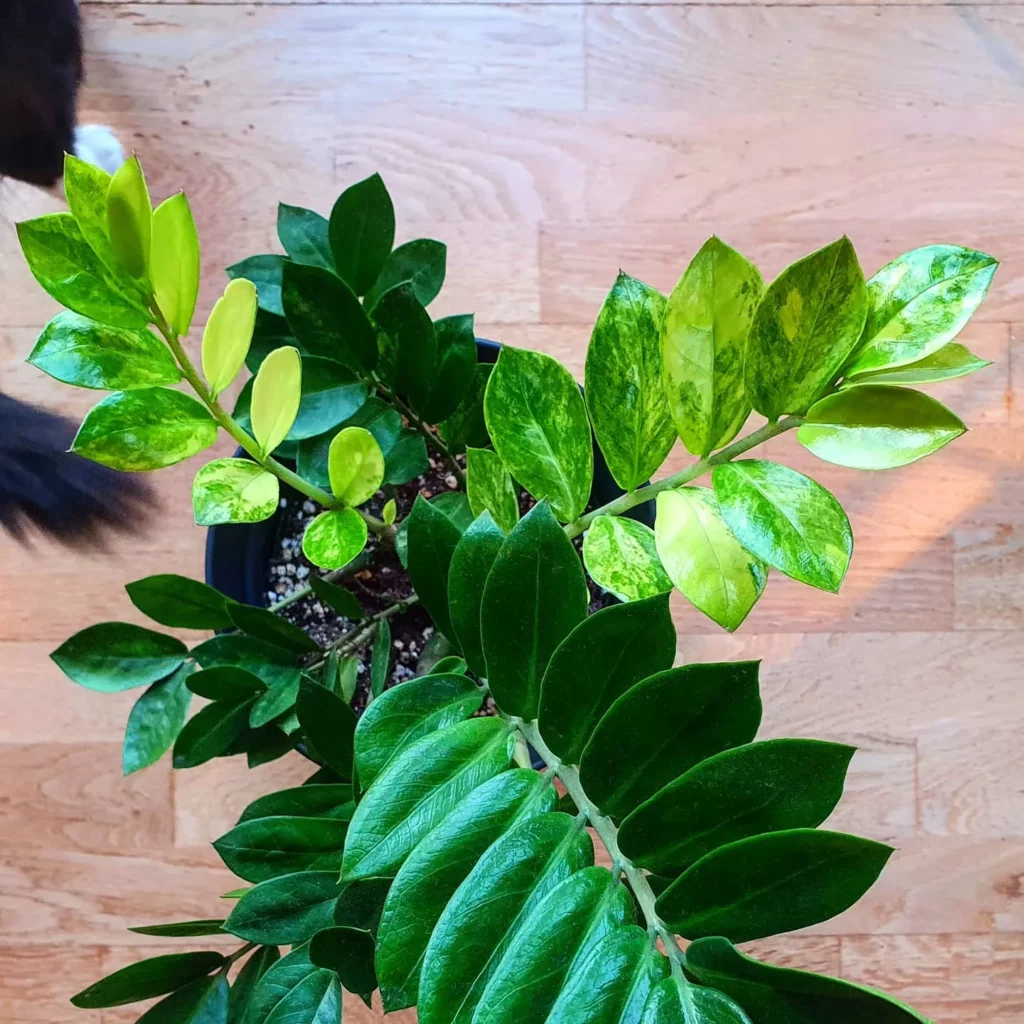
Keeping your variegated ZZ plant in top shape means being aware of the potential diseases and pests it may encounter. While the ZZ plant is generally hardy and disease-free, it is not immune to certain issues that can hinder its growth and vitality.
Common Diseases:
The most common diseases that may affect variegated ZZ plants include:
- Root rot: Overwatering or poor drainage can lead to root rot, causing the roots to become mushy and brown. To prevent root rot, ensure the pot has drainage holes and allow the soil to dry out between waterings.
- Leaf spot: Leaf spot appears as dark, irregular spots on the leaves. It is often caused by overwatering, high humidity, or excessive foliage moisture. Remove any affected leaves and improve air circulation around the plant.
- Leaf yellowing: Yellowing leaves can be a sign of overwatering, insufficient light, or nutrient deficiencies. Adjust watering habits, provide adequate light, and consider fertilizing with a balanced indoor plant fertilizer.
Common Pests:
The most common pests that may affect variegated ZZ plants include:
- Mealybugs: These small, white, cottony pests can be found on the leaves and stem joints. Use a cotton swab dipped in rubbing alcohol to remove them, or try a natural insecticidal soap.
- Scale insects: Scale insects appear as small, shell-like bumps on the leaves and stems. Use a soft brush or cotton swab dipped in alcohol to manually remove them. For severe infestations, consider using an insecticidal soap.
- Fungus gnats: These tiny black flies are often attracted to damp soil. Allow the soil to dry out between waterings and consider using sticky traps to catch and control the adults.
- Aphids: Aphids are small, pear-shaped insects that may cluster on the new growth of your ZZ plant. Wipe them away with a damp cloth or spray with water to dislodge them. Natural insecticidal soaps can also be effective.
| Disease/Pest | Symptoms | Treatment |
|---|---|---|
| Root rot | Mushy, brown roots | Improve drainage, allow soil to dry out between waterings |
| Leaf spot | Dark, irregular spots on leaves | Remove affected leaves, improve air circulation |
| Leaf yellowing | Yellowing leaves | Adjust watering, provide sufficient light, consider fertilizing |
| Mealybugs | Small white cottony pests on leaves and stem joints | Remove with alcohol-soaked cotton swab or use insecticidal soap |
| Scale insects | Small shell-like bumps on leaves and stems | Remove manually with alcohol or use insecticidal soap |
| Fungus gnats | Tiny black flies attracted to damp soil | Allow soil to dry out, use sticky traps to catch adults |
| Aphids | Small pear-shaped insects on new growth | Wipe away or spray with water, use natural insecticidal soap |
Conclusion
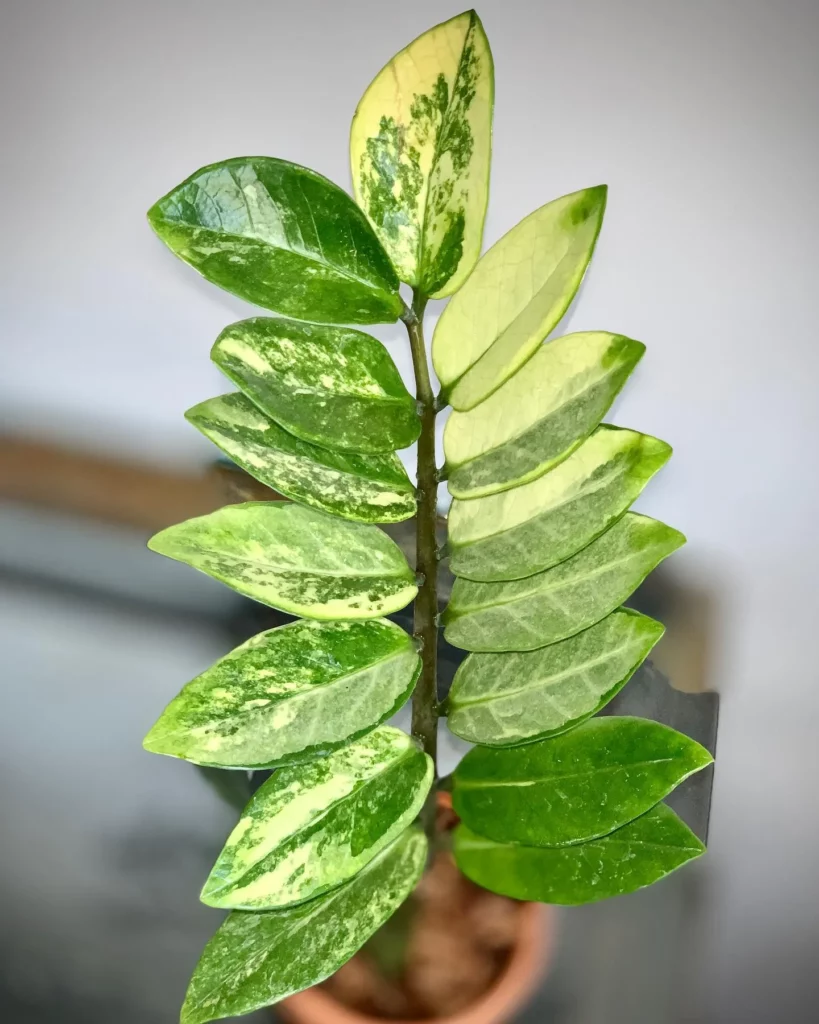
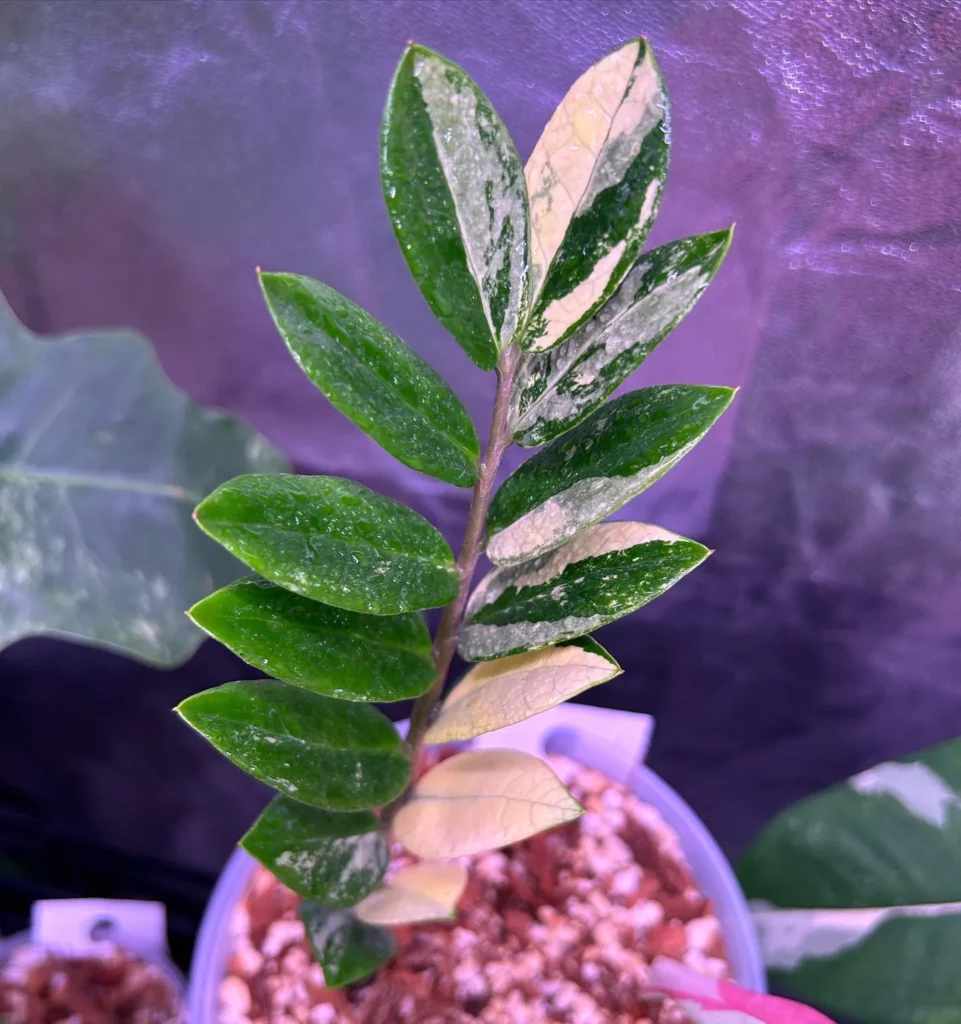

The variegated ZZ plant is a low-maintenance houseplant that adds beauty to any space. Its shiny, oval-shaped leaves shoot upward and grow quickly indoors, making it an eye-catching addition to your home or office.
With its ability to thrive in various lighting conditions, the variegated ZZ plant is adaptable to different environments. However, it prefers bright, indirect sunlight and can be easily scorched by direct sun exposure.
One of the unique characteristics of the ZZ plant is its rhizomes, which store water and make it drought-tolerant. This means that the variegated ZZ plant requires infrequent watering.
To keep it healthy, it’s important to thoroughly wet the soil when watering and remove any excess water to prevent root rot. The plant does not require regular fertilizing, but if desired, it can be fertilized with half-strength indoor plant fertilizer during its active growing season.
To maintain the variegated ZZ plant’s beauty, it’s essential to keep its leaves clean and shiny. Dust accumulation can make the leaves dull, so gently wiping them with a damp washcloth will help restore their natural shine.
Additionally, it’s recommended to propagate the plant through division or stem cuttings and repot it only when it has outgrown its current container.
While the variegated ZZ plant is generally disease-free, it can be susceptible to common houseplant pests like mealybugs, scale, fungus gnats, and aphids.
Regularly inspecting the plant and taking appropriate measures to control any infestations will ensure its health and vitality. It is worth noting that the variegated ZZ plant is mildly toxic to humans and pets, so it’s important to keep it out of reach.
Make sure to check out our article on Super Nova ZZ Plant: A Stellar Care Guide. And after reading that ZZ Plant article, check out our article on White Variegata ZZ Plant: Step-by-Step Care Journey.
FAQ
Q: Can the variegated ZZ plant tolerate direct sunlight?
A: No, it is important to avoid direct sunlight as it can scorch the leaves. The variegated ZZ plant prefers bright, indirect sunlight.
Q: How often should I water the variegated ZZ plant?
A: The variegated ZZ plant is drought-tolerant and requires infrequent watering. It is necessary to thoroughly wet the soil when watering and get rid of excess water.
Q: Does the variegated ZZ plant require regular fertilizing?
A: The variegated ZZ plant does not require regular fertilizing. However, if desired, it can be fertilized with indoor plant fertilizer diluted to half-strength during its active growing season.
Q: How can I restore the shine of the variegated ZZ plant leaves?
A: The leaves of the variegated ZZ plant can become dull due to dust accumulation. They can be gently wiped with a damp washcloth to restore their shine.
Q: How can I propagate the variegated ZZ plant?
A: The variegated ZZ plant can be propagated through division or stem cuttings. Detailed instructions can be found in the propagation section of the care guide.
Q: What are the common pests that can infest the variegated ZZ plant?
A: The variegated ZZ plant can be infested by common houseplant pests such as mealybugs, scale, fungus gnats, and aphids. Proper identification and treatment methods are important to keep the plant healthy.
Q: Is the variegated ZZ plant toxic to humans and pets?
A: Yes, the variegated ZZ plant is mildly toxic if ingested by humans and pets. It is important to keep it out of reach and seek medical attention if any symptoms occur.





